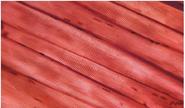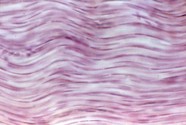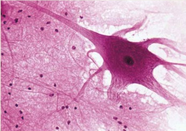Histology - The study of tissues
Tissues are classified by their structure and function.
There are four major types of tissue in the body:
Epithelial tissue
Epithelial tissue forms surfaces on tissues that border the outside, or that line a cavity.
Watch the Power Point presentation to learn about the different types of epithelial tissue.
|
Muscle tissue
Muscle tissue moves the skeleton, the heart, or blood vessels and hollow organs.
Visit the Muscular System page to learn more about muscle tissue.
|
Connective tissue
The most common tissue type in the body. Supports organs, covers muscle, connects bones and organs.
Watch the Power Point presentation to learn about the different types of connective tissue.
|
Nervous tissue
Controls the body. Important for maintaining homeostasis.
| ||||||||||||
